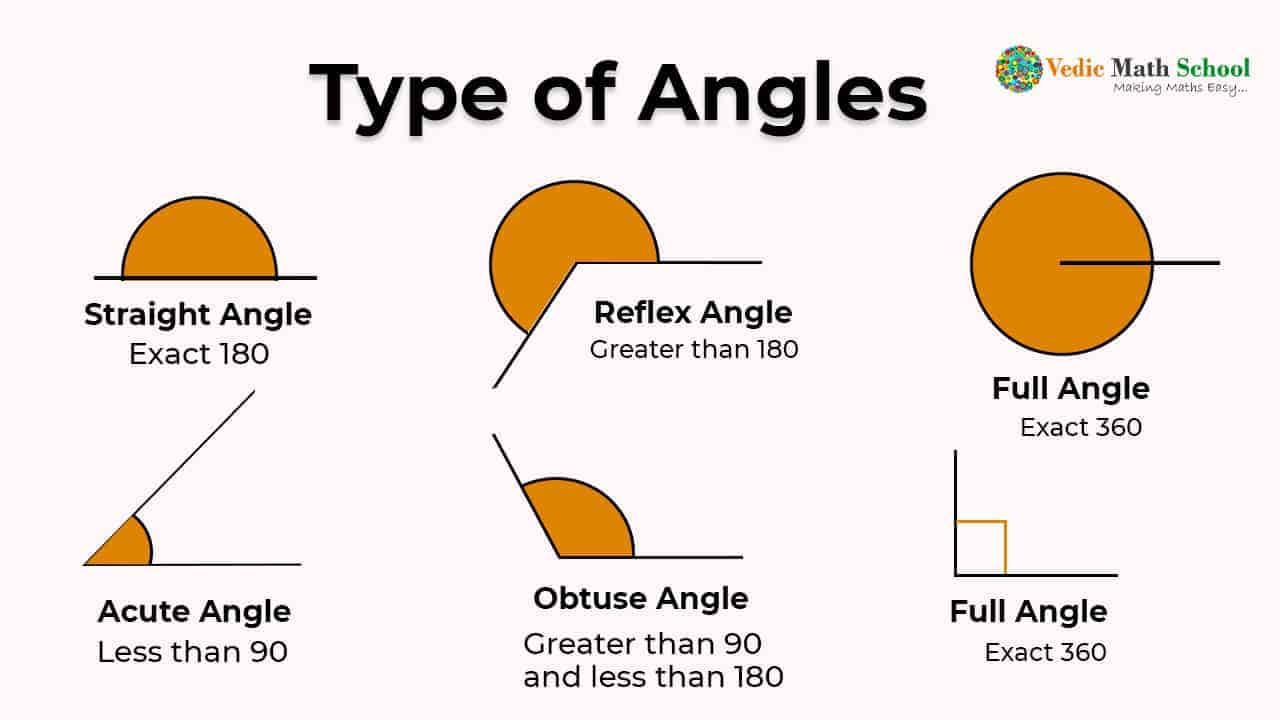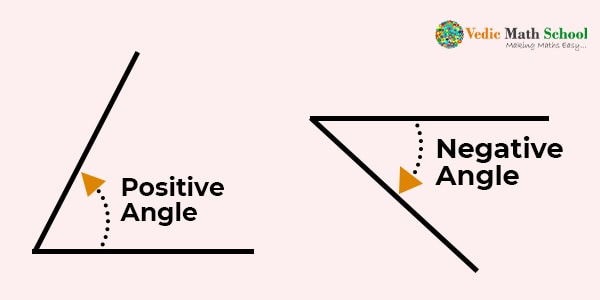In geometry, an angle is a figure which is formed when two straight lines or rays (Ray is a part of a line that has a fixed starting point but no endpoint, which means it can be extended infinitely in one direction) meet at a common endpoint. The word angle is taken from a latin word “angulus” which means the “corners”.
Angles are a common part of our day-to-day life such as scissors, edge of a table, pyramids etc.
Table of Contents
Representation of An Angle
- Angle is represented by the symbol ∠ .
- Angles are measured in degrees ( ° ) with the help of a protractor ( A protractor is a measuring device that is in the shape of a semicircle. It consists of degrees that are marked clockwise from 0° to 180° in the outer scale and anti-clockwise from 0° to 180° in the inner scale.
For example: – 65 degrees is expressed as 65° .

Before coming to types of angle, let us discuss the parts of an angle: –
Parts of Angle
There are 4 main parts that are related to an angle: –
- Vertex
- Arms
- Initial side
- Terminal side
Let us understand the parts of angle with the help of given figure: –

1. Vertex
A vertex can be defined as a corner of an angle or a point where two lines/sides meet. In other words, we can say that it is a common endpoint that is shared by the two rays.
Here, O is the vertex in the given figure.
Read More : How to find HCF in 10 seconds
2. Arms
Arms are the two sides of the angle that are joined at a common endpoint. In simple words, two rays which join at a common point to form an angle are called the arms of the angle.
Here, OX and OY are the arms of the angles.
3. Initial Side
Initial side is a straight line from which an angle is drawn. ( Base of an angle ).
OY is the initial side according to the figure.
Read More : METHODS FOR SOLVING QUADRATIC EQUATION
4. Terminal Side
Terminal side is the side up to which the angle is measured. OX is the terminal side in the figure.
Types Of Angles Based On Measurement
There are six types of angles classified on the basis of their measurements. Each type of angle is unique in their own way.
Now, let us talk about the types of angles and their properties: –

- Acute angle
- Obtuse angle
- Straight angle
- Complete or full angle
- Right angle
- Reflex angle
Read More : Find your LCM in 10 seconds
1. Acute Angle
An acute angle can be defined as an angle whose measure is greater than 0° and less than 90° at the vertex.
2. Obtuse Angle
An obtuse angle can be defined as an angle whose measurement is less than 180° but greater than 90° at the vertex.
3. Straight Angle
As the name itself suggests “ straight “, the angle which is formed by a straight line is known as straight angle. In simple words, a straight angle is a straight line, and the angle formed between two rays is equal to 180°. It is exactly 180°.
4. Right Angle
A right angle can be defined as an angle whose measure is exactly 90° at the vertex.
Read More : TRIANGLE: Definition, Parts, Properties,Types and Formulae
5. Reflex Angle
A reflex angle can be defined as an angle whose measure is greater than 180° but less than 360°.
6. Complete Or Full Angle
A complete angle can be defined as an angle whose measure is exactly 360°.

Types Of Angles Based On Rotation
There are two types of angles classified on the basis of rotation. Each type of angle is unique in their own way.
- Positive Angle
- Negative Angle
Read More : Fractions From Basics. Understand What is Fraction, Types with Examples
Positive Angle
An angle that is measured in the anti-clockwise or counterclockwise (opposite of clockwise) direction is known as a positive angle.
In Simple words, positive angles are the angles that are rotated from the base in the anti-clockwise direction.
Negative Angle
An angle which is measured in the clockwise direction from the base is known as a negative angle.
In Simple words, negative angles are the angles that are rotated from the base in the clockwise direction.

Properties Of Angles
- The sum of all the angles on the straight line is always equal to 180 degrees.
- The sum of all the angles around the point is always equal to 360 degrees.
Read More : Addition of Fraction
Applications Of Angles
- Engineers construct buildings, bridges, houses, monuments using angle measurement.
- Athletes use the concept of angle in sports to enhance their performance.
- Carpenters use this to make furniture like doors, chairs, sofas, tables, etc.
LET US SOLVE SOME QUESTIONS RELATED TO ANGLES: –
Example
Q. Categorize the following angles into acute angles, obtuse angles, right angles, or reflex angles.
a) 54°
= 54° is an acute angle as it lies in between 0° and 90°.
b) 130°
= 130° is an obtuse angle as it lies in between 90° and 180°.
c) 90°
= 90° is the right angle .
d) 310°
= 310° is the reflex angle as it lies in between 180° and 360°.
Read More : Subtraction of Fractions
Practice:
Categorize the following angles into acute angles, obtuse angles, right angles, or reflex angles.
a) 44°
b) 80°
c) 190°
d) 170°







